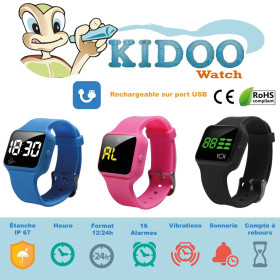Dormez l’esprit tranquille : découvrez l’alèse bordable et imperméable Medlogics Vous souhaitez offrir à votre enfant ou à un proche une protection fiable contre les accidents nocturnes .
Blog navigation

Solutions for urinary leaks at school
Estimated Reading Time:
Related products
UnderWunder - Inseam boxer briefs - Boys
Price: €18.95
Can absorb 80 ml (a small accident or 2)
Looks like ordinary underwear...
UnderWunder - UnderWunder Underpants - Girl's
Price: €18.95
Can absorb 80 ml (a small accident or 2)
Looks like ordinary underwear...
Dry&Cool - Boys' non-reversible boxer shorts
Price: €24.95
Absorption: 80 ml
Reinforced absorbency: 125 ml (colours: Dry black and...
Teeny Hero - Lot de 3 inserts booster and microfibre
Price: €18.95
Pack of 3Booster inserts in Microfibre and Cotton
Highly absorbent: 2 thin...
Teeny Hero - Intraversable boxer shorts - Garçon
Price: €19.95
Boys' boxer shorts: for day and night (by adding an insert)
Attachment...
UnderWunder - Boxer incontinence intraversable - Homme
Price: €29.94
Can absorb 125 ml (a small accident or 2)
Looks like ordinary underwear
Fits...
Dry&Cool - Boxer - Homme
Price: €27.95
Can absorb 100 ml (a small accident or 2)
Looks like ordinary underwear...
Dry&Cool - Girls' Invisibility Shorty Panties
Price: €23.95
Can absorb 75 ml (a small accident or 2)
Looks like ordinary underwear...
Dry&Cool - Maxi panties - Women's
Old price: €25.96
Price: €23.36
Discount: 10%
Save up: -€2.60
Can absorb 125 ml (a small accident or 2)
Looks like ordinary underwear
Fits...
Woxers - Waterproof bladder weakness boxer shorts - Adult
Old price: €24.90
Price: €22.41
Discount: 10%
Save up: -€2.49
Unique in France
Fantastic 100% cotton boxer shorts for day and night use...
Washing net 40 X 50 cm
Price: €3.90
Polyester net for washing machines and tumble dryers
Zip closure
Dimensions:...
Super Undies - Pull-On - Aquanaut
Old price: €27.00
Price: €24.30
Discount: 10%
Save up: -€2.70
Waterproof training pants
Absorbent microfibre lining
Internal pocket for...
Super Undies - Pull-On - Cupcake Queen
Old price: €27.00
Price: €24.30
Discount: 10%
Save up: -€2.70
Waterproof training pants
Absorbent microfibre lining
Internal pocket for...
Super Undies - Pull-On - Grey
Old price: €27.00
Price: €24.30
Discount: 10%
Save up: -€2.70
Waterproof training pants
Absorbent microfibre lining
Internal pocket for...
Super Undies - Pull-On - Pigeon
Old price: €27.00
Price: €24.30
Discount: 10%
Save up: -€2.70
Waterproof training pants
Absorbent microfibre lining
Internal pocket for...
SnazziPants - Training pants - Unisex
Old price: €9.90
Price: €8.91
Discount: 10%
Save up: -€0.99
Waterproof training pants
Absorbent microfibre lining
Available in different...
Super Undies - Absorbent underwear - Children & Teens
Old price: €39.90
Price: €35.91
Discount: 10%
Save up: -€3.99
Waterproof over the entire wet area
2 integrated absorbent microfibre...
UnderWunder Women's Mini Briefs - bladder weakness
Price: €19.94
Can absorb 125 ml (a small accident or 2)
Looks like ordinary underwear
For...
UnderWunder - Midi Briefs - bladder leaks - Women
Price: €19.94
Can absorb 125 ml (a small accident or 2)
Looks like ordinary underwear
For...
UnderWunder Women's Maxi Briefs - bladder weakness
Price: €19.94
Can absorb 125 ml (a small accident or 2)
Looks like ordinary underwear
For...
VibraLITE - Mini - Vibrating watch
Old price: €69.95
Price: €55.96
Discount: 20%
Save up: -€13.99
Set 12 alarms and forget about it!
Settings lock function.
Choose from Sound...
Kidoo Watch - vibrating watch - 16 alarms
Old price: €25.94
Price: €18.15
Discount: 30%
Save up: -€7.78
16 daily alarms
12-24 hour format
Mode: Vibration or Sound
USB2...
Uriflex - R15 recall watch
Price: €29.95
15 daily vibration alarms
Splash-proof
12-24h format
USB rechargeable
7...
Uriflex - U15 booster watch
Price: €29.95
15 daily alarms
Splash-proof
12-24h format
Mode: Vibration
USB2...
Leave a comment
Related posts
 DRI SLEEPER Excel Bedwetting Alarm for Enuresis
DRI SLEEPER Excel Bedwetting Alarm for Enuresis
Posted in:
Les Alarmes Pipi Stop
09/15/2014































Latest comments